Whalers are not the only ships that go to harvest the bounty of the seas. Man has pursued fish for millennia, and continues to do so today using a variety of different methods. Fishing is a wide subject, covering everything from an angler with a rod on a streambank to fleets far out at sea using nets and the latest technology to catch fish for sale. It's this aspect I'll focus on, looking solely at commercial oceanic fishing.
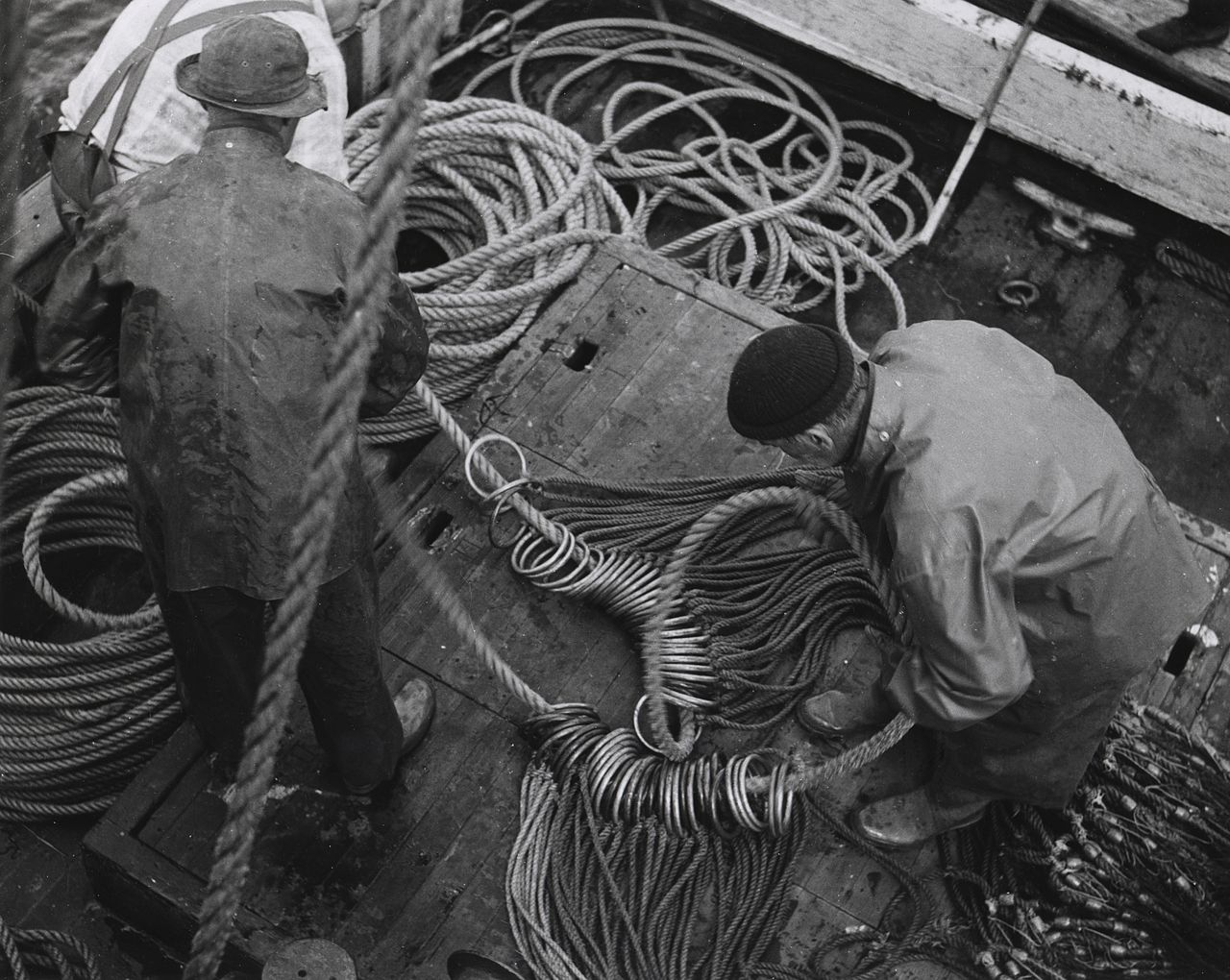
Fishermen prepare longlines for salmon
There are two main ways to fish: you can either get them to bite on a hook, or catch them in a net. The latter is by far the most common, although longline fishing is an important part of the fishing fleet. This involves using a line with multiple baited hooks, as many as 2,500 on a 75-mile long line in some fisheries. This method produces the best fish quality, although the work of baiting the hooks means that it is reserved for either high-value fish like tuna or for species like halibut that live on rocky bottoms where nets don't work. Longlining is also generally considered to be more environmentally friendly than most nets, although bycatch, where non-targeted species are caught, is still a problem. Very occasionally, rod-type lines with one or a few hooks are used, but these have largely been replaced by other methods.
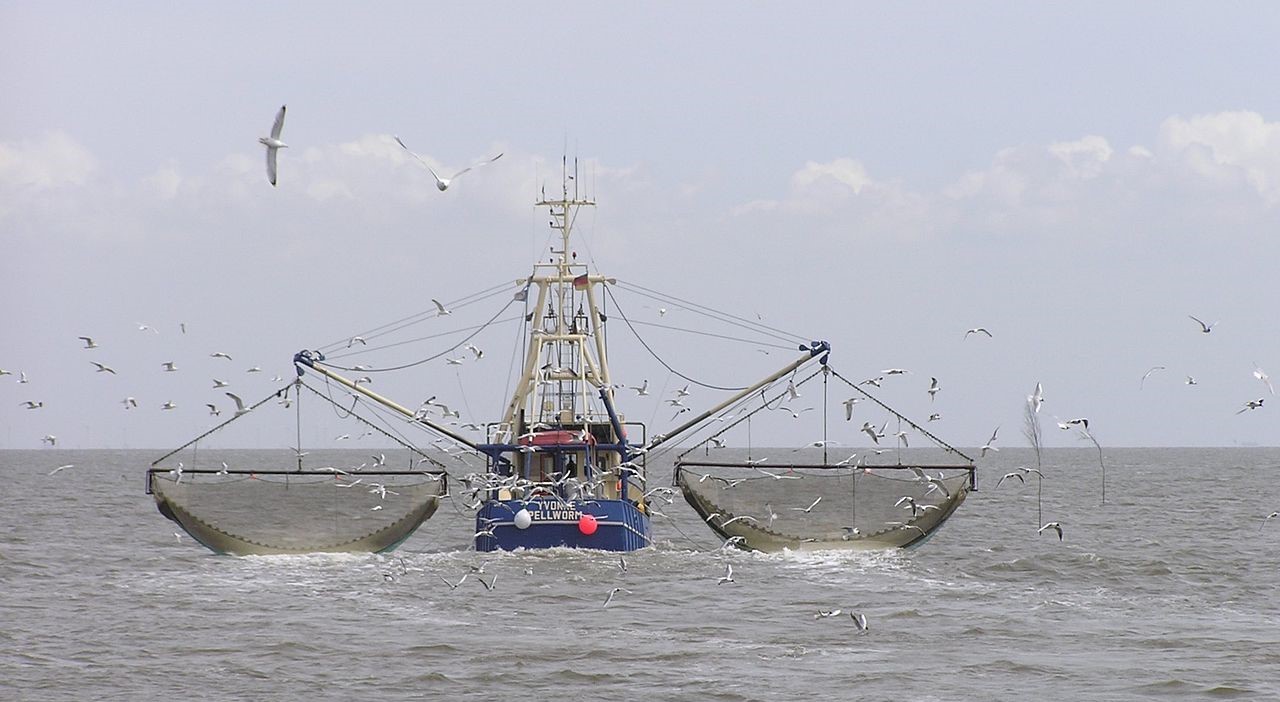
A trawler hauls up nets of fish
Nets can be used in several ways. The most common is trawling, which drags a giant net through the water and essentially scoops up fish. Trawling can be targeted at either demersal (bottom-feeding) or pelagic (mid-ocean) fish. Bottom trawls usually have rollers that allow them to travel along the seafloor, and use so-called otter boards to hold the mouth of the net open, rather like the paravanes used for minesweeping.1 These also stir up the bottom, scaring fish into the net, an effect sometimes enhanced by other devices. Some modern trawls are 300' or more across, and are usually left down for several hours before being hauled up with a hundred or more tons of fish onboard. Midwater trawling is similar, but relies on careful selection of speed and rope length to place the trawl at a specific depth. It didn't take off until after WWII, when sonar made it possible to spot shoals of fish and hunt them down with the trawler. Unfortunately, these methods are obviously not selective, and while schools of a particular species are usually targeted, anything that gets in the way will be dragged up.

Trawls and drift nets
Before the invention of the pelagic trawl, the most common way of getting fish that live high in the sea was drift netting, where a ship (drifter) drags a single large net with floats at the top and weights at the bottom. The mesh was larger than that of a trawling net, and fish of the appropriate size that swam into it would either get their gills caught or become entangled. Smaller fish could pass through cleanly. Today, concerns of environmental effects dramatically limit drift netting.
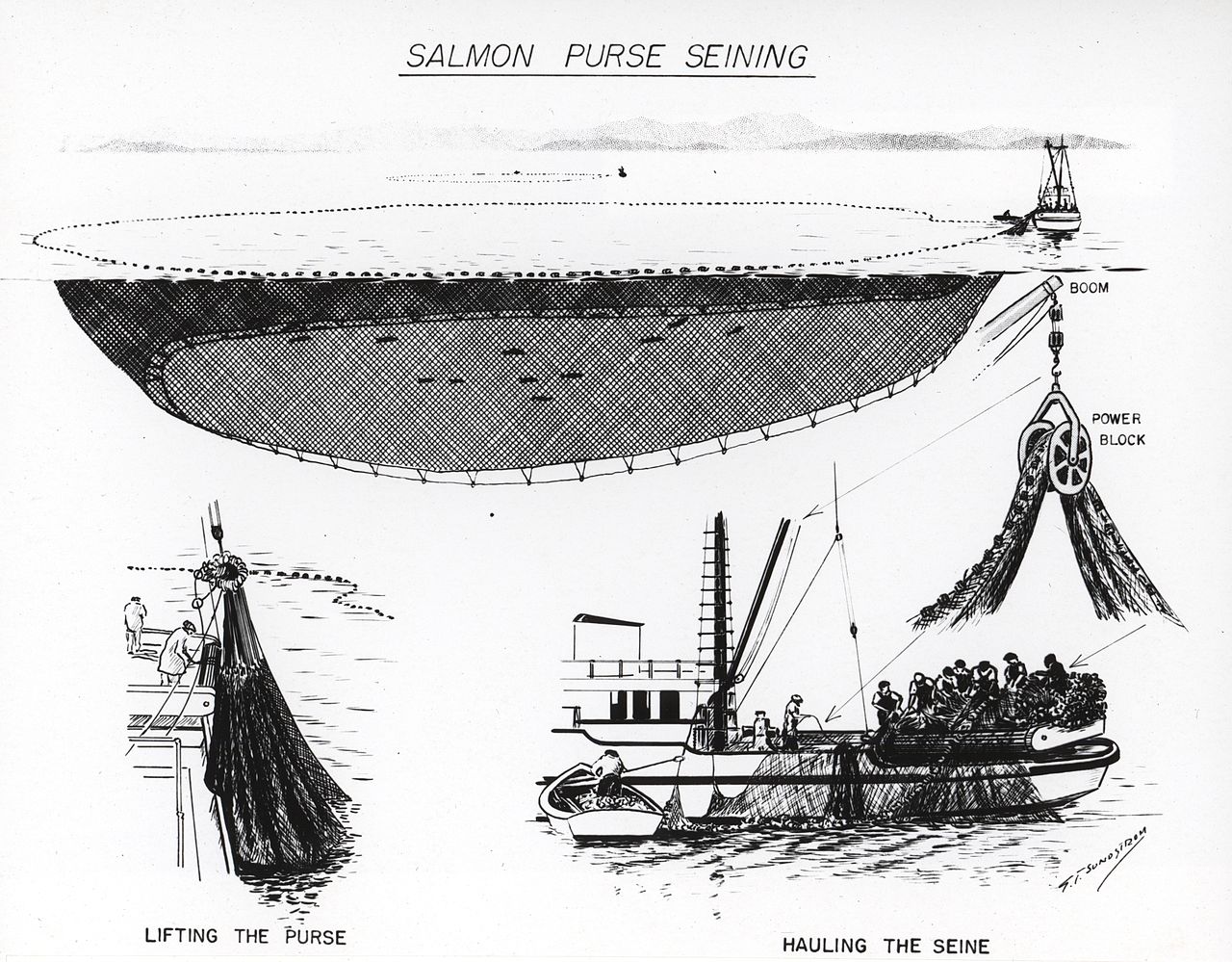
Purse seining for salmon
Another method of pursuing fish in open water is seine fishing, which uses a net with floats and weights, but with a smaller mesh than a drift net. The most common is the purse seine, which has a series of rings at the bottom of the net with a line running through them. The net is drawn around the school of fish by the boat, and then the line at the bottom is pulled, closing the bottom of the net. The whole thing is then hauled up using a so-called power block. This method is particularly common for salmon and other fish that school near the surface.
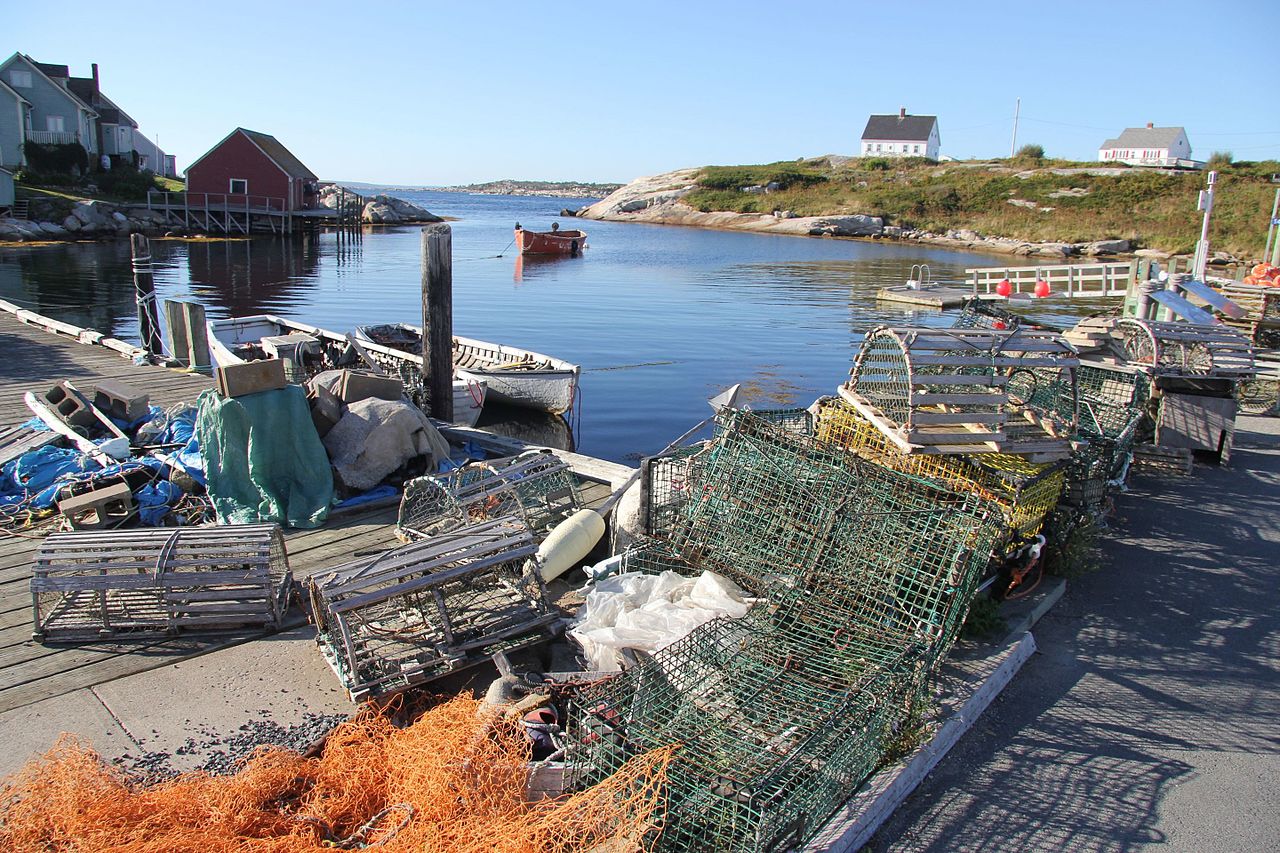
Lobster traps ashore
But while the above-discussed systems are adequate for fish, there are a few other aquatic species that they don't work for. Scallops, clams and oysters are usually harvested by dredging, hauling a giant scraper along the bottom to pick them up. Lobsters and crabs are traditionally taken with traps, baited boxes left on the bottom and hauled up every few days to check the contents.
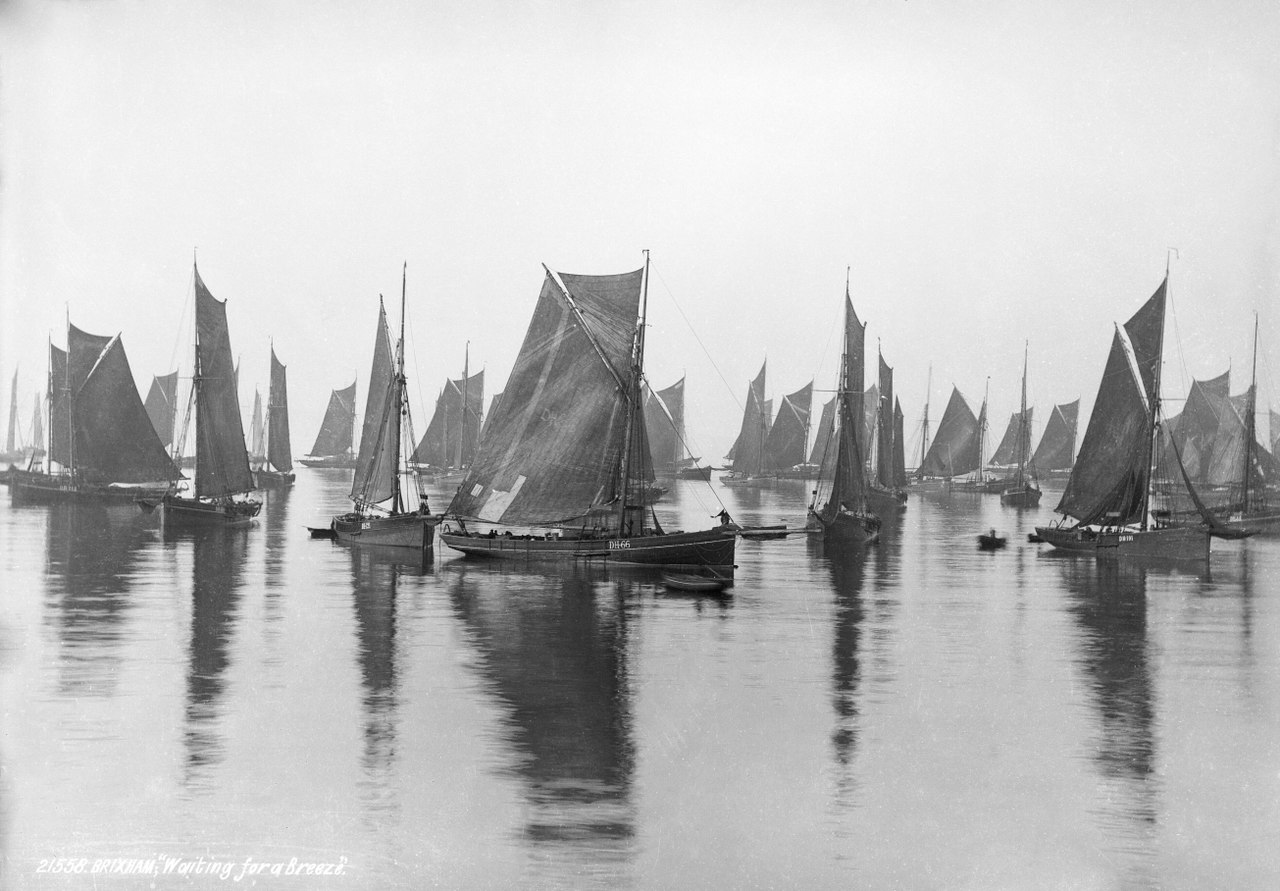
The fishing fleet of Brixham, Devon waits for a breeze
Fishing was traditionally a coastal industry, carried out by small boats working relatively close to shore. Attempts to reach deeper water were thwarted by the simple fact that fish spoil. Methods such as drying, smoking and salting could preserve them, but they generally had to be done ashore. As a result, the reach of a fishing fleet was limited. Even in 1900, sail was still a common means of propulsion for the world's fishing fleets. What began to drive serious change was the use of cooling technology to extend the range of the fleet. This was initially provided by ice, cut from lakes and ponds in the winter and stored throughout the year.2 This allowed fish to be kept for up to two weeks and still arrive in good condition, allowing fishing fleets to venture much further afield. To improve yields still further and allow the fishing vessels to avoid wasting time shuttling to their home ports, a number of fisheries made use of fish carriers, which would take the fish back to port and bring food and other supplies, in a rare civilian use of underway replenishment.3
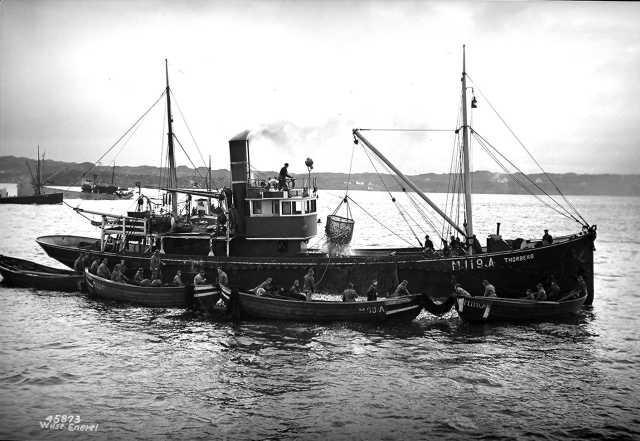
Fishing dorys around a mothership
By the 1890s, mechanical refrigeration began to replace the use of natural ice, but it wasn't until the 1920s that experiments with actually freezing fish at sea began, and the technology didn't take off until after WWII, when the disruptions of the postwar years reduced resistance to new foods. Some ships chose to freeze the whole fish, while others processed it first, with many modern ships able to process the catch for sale to wholesalers before it ever touches land. Much of the catch is processed into meal for use in animal feed, with vessels dedicated to this purpose focusing on efficiency over quality. Other innovations have been the switch from trawling over the side to trawling over the stern, making it easier to handle larger and heavier nets, and the use of diesel instead of steam. Electronic aids have grown in number, too, allowing skippers to navigate precisely and find fish using sonar.
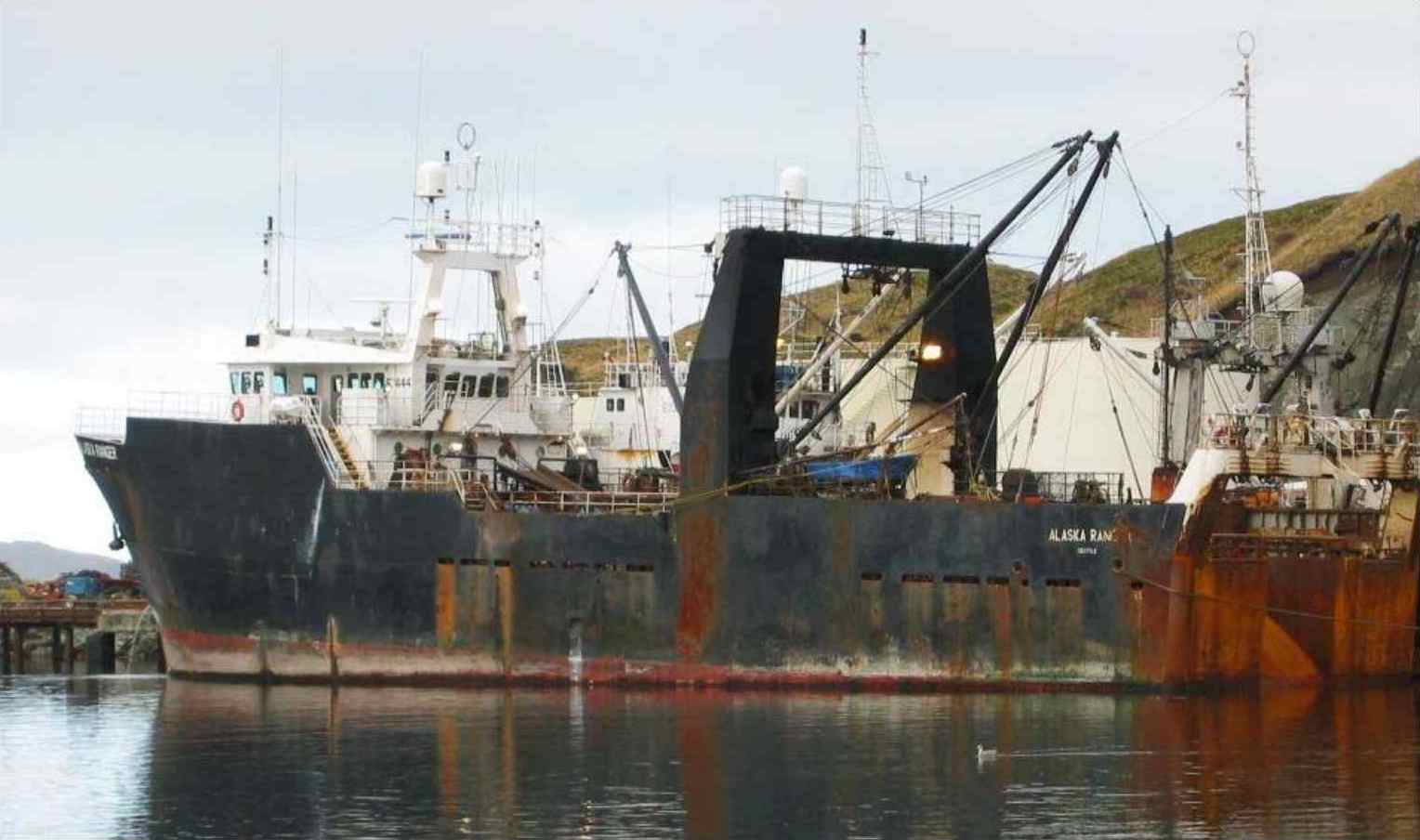
Alaska Ranger, a modern factory fishing ship
Unfortunately, the fishing industry hasn't used this technological bonanza responsibly. Instead, it has been used to drive fishery4 after fishery into collapse, with the fleet then moving on to another species or a more distant fishery. Regulation of this process was hindered by the limits of jurisdiction, as the governments of major fishing nations had no real incentive to care about distant fisheries, and the closer governments only had control out to 3 miles. Beginning in the 1950s, some nations started to assert more control over their fisheries, and in 1982, the United Nations Convention on the Law of the Sea (UNCLOS) went into effect, giving nations control of fisheries out to 200 miles. This was a step in the right direction, but large areas of the ocean remain effectively unregulated, and illegal fishing is a serious problem, particularly from the fleets of developing nations. Still, there is hope, as regulations tighten and sustainable fishing becomes more common.
This brings us to the end of my series on merchant ships, which has looked at the massive variety of vessels that ply the seas for civilian purposes. Ultimately, the protection of these vessels is one of the key purposes of the naval ships I spend most of my time on, and as such, they're worth paying attention to.
1 This tended to make trawlers ideal for use as minesweepers during wartime, and the British in particular made heavy use of their fishing fleet to keep ports open in both World Wars. ⇑
2 Although not in scope here, the ice trade of the 19th century is fascinating. Ice was exported from New England and Norway as far away as India and China. ⇑
3 Amusingly, many of these carriers that called at London were fitted for trawling because that made them exempt from port duties. This practice also saw the foundation of the Royal National Mission to Deep Sea Fishermen, which sent out ships to provide spiritual and medical services to the fishing fleets. ⇑
4 The term for a specific species of fish in a particular place, for instance the Grand Banks cod fishery. ⇑

Comments
Man, the Alaska Ranger is not a pretty ship.
And that's the wrong link to explain ice cutting: https://www.youtube.com/watch?v=pe8jOp349P8
re footnote 2, The Frozen Water Trade is a great book on the topic.
https://www.bookdepository.com/Frozen-Water-Trade-Gavin-Weightman/9780007102860?ref=grid-view&qid=1611523437106&sr=1-1
Very few modern merchant ships are pretty, although that particular example isn't going to win any beauty contests even by the standards of the type. As for the ice trade, I noted it was out of scope, which means it gets an easy, straightforward source like Wiki. (Not to mention my general policy on video.)
As a native of the Chesapeake Bay area, I was able to witness a fishery collapse firsthand (oysters). To me the most depressing part was watching the difficulty of convincing watermen that fish/mollusk stocks are depletable and that the answer to declining harvests was not to try and catch every last animal left. They fought any and all restrictions tooth and nail, the usual argument being that "my granddaddy did this" overlooking the fact their granddaddy used tongs and not a dredge. In the end the oysters were all but gone and they were out of a livelihood. The tragedy of the commons gets even more dire when the commons is below the surface and out of sight.
Wasn't the Grand Banks fishery off Newfoundland a major fishery for European fishermen for at least 500 years? How did they deal with the spoilage problem?
And I agree that a wiki link is usually the best way to introduce a new subject. I'm rarely going to sit down and watch a video instead of skimming through a wiki article unless I've already decided that I want to devote some time to the subject. Even assuming that I'm at home or somewhere I CAN watch a video, not at work (lunchtime only... probably...).
Wikipedia comes in for a lot of criticism, but except for particularly controversial subjects like politics it really is the best overview and introduction to most areas.
They would usually dry the fish on Newfoundland. I believe I ran across a reference to a treaty which preserved the rights of some other European power(s) to dry fish when the British took Newfoundland. Salting was probably also an option. A lot of older food choices were driven by preservation.
It seems the only thing that will actually convince fishermen that a fishery collapse is possible is there being no fish to catch anywhere even though fish that used to be everywhere are now only found where there are structures which should make it obvious that something is wrong and is also something they should notice.
I've heard stories that there were a lot of local fisheries, such as "in this bay" or "in this set of islands" where the fisheries were sustained for many decades or even centuries via "local, informal, quota setting".
What that means is that if you caught more than your "fair share", you'd find a bunch of angry men surrounding you one dark night to explain the quota system to you. Using kinetic energy based reasoning if necessary.
If you weren't already an approved member of the local fishery. Which often meant that your father wasn't a member, and maybe his father, then this would be explained to you in a similar manner.
It was when the police came in and forced these "illegal cartels" to stop operating that the catch size got out of hand and the fisheries collapsed.
Source: My uncle was a professional fisherman.
Wiki sez:
So there's a hook for you, Bean.
I have no idea what that's talking about. I wouldn't be surprised if the RN was a fairly early adopter of artificial ice, and they might well have been the best-placed to spread it outside of Europe, but I don't remember hearing that they actually did. Particularly given that I looked into naval rations pretty thoroughly last year. Google isn't helpful (I checked a few of the major RN dockyards overseas, and couldn't turn up a reference to an ice machine at any of them) and the one of the wiki references I could access had no mention of the RN at all.
It also seems like the kind of thing I should have come across before if it was true. That's not strong evidence, but I've read enough on the subject that I'm going to come down on the side of "unlikely".
@Doctorpat
I wouldn't be surprised to see things like that, community enforcement is a powerful tool (as are truncheons). Though I would argue that the demise of those systems came more due to better transportation opening up markets more than enforcement, with in previous times it simply not being possible to sell as many fish as could be caught. In that scenario, someone taking more than their fair share is not just depleting the resource, it's crowding the market and taking cash out of your pocket. Once you can ship canned or refrigerated fish the market expands and everyone has incentives to cheat.
@bean
With regards to the Grand Banks Fishery, I think most of it was done by salting and then some drying later on. That fishery goes back to the 1500s or so and a lot of the European powers had outposts on Newfoundland (and if you ever go you can see their old bread ovens and what not on tiny islands) but even the small ships I understand did most of the processing on them--at the end of each day they would be fileting the catch and covering it in salt. I'm not certain but I think some of them would have then returned to Europe before doing the drying step. It's a novel but my understanding is that the description of processing the catch in Kipling's "Captains Courageous" is fairly accurate.